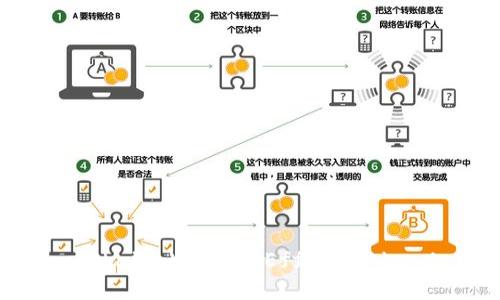Definition of Blockchain Wallets
A blockchain wallet is a software program that allows users to store and manage their cryptocurrency. Unlike traditional wallets, blockchain wallets do not store the actual cryptocurrency but instead hold the public and private keys required to interact with various blockchain networks.
Importance of Wallets in the Cryptocurrency Ecosystem

Wallets are essential for participating in the cryptocurrency economy. They serve as the interface between users and blockchain networks, enabling users to send, receive, and manage their digital assets securely.
#### 2. Types of Blockchain WalletsHot Wallets vs. Cold Wallets
Hot wallets are connected to the internet and are generally more accessible for daily transactions. Cold wallets, on the other hand, are offline, providing enhanced security against online threats. Understanding the differences between them is critical for choosing the right wallet based on your needs.
Desktop Wallets

Desktop wallets are installed on personal computers and provide a high level of security. However, users need to ensure their computer is secure and free from malware.
Mobile Wallets
Mobile wallets are applications on smartphones that allow users to access their funds on-the-go. They often come with user-friendly interfaces and features like QR code scanning for easy transactions.
Hardware Wallets
Hardware wallets are physical devices that store cryptocurrency offline. They are considered one of the safest options for long-term storage, protecting assets from online hacking attempts.
Paper Wallets
A paper wallet is a physical printout of your public and private keys. While completely offline, it requires careful handling and storage to avoid loss or damage.
#### 3. Choosing the Right Blockchain WalletFactors to Consider
When selecting a blockchain wallet, consider aspects like user security, ease of access, and compatibility with various cryptocurrencies. Your choice should align with your trading habits and security preferences.
Security Features
Pay attention to wallets that offer two-factor authentication, seed phrases, and backup options. These features significantly enhance security against unauthorized access.
User Experience and Interface
A wallet with a user-friendly interface can enhance your overall experience, especially if you are new to cryptocurrencies. The design should facilitate easy navigation and management of your assets.
Supported Cryptocurrencies
Make sure the wallet supports the cryptocurrencies you plan to invest in or manage. Some wallets are designed for specific currencies, while others support multiple assets.
#### 4. Setting Up Your Blockchain WalletStep-by-Step Guide to Create a Wallet
Creating a blockchain wallet typically involves downloading a wallet app, setting up an account, and securing it with a strong password. Follow the specific instructions provided by the wallet provider.
Backing Up Your Wallet
Backing up your wallet involves creating a secure copy of your private keys or seed phrases. This backup ensures you can recover your wallet if you lose access to the original device.
Understanding Private and Public Keys
Private keys are akin to a password that allows you to access and manage your cryptocurrency, while public keys are like your bank account number, shareable with others to receive funds.
#### 5. Managing Your Blockchain WalletSending and Receiving Cryptocurrencies
To send or receive cryptocurrencies, you'll need the recipient's wallet address. Transactions are relatively straightforward through wallet interfaces, often involving just a few clicks.
Tracking Your Balance and Transactions
Most wallets provide a dashboard where you can view your available balance and transaction history. It's important to regularly monitor your account for any unauthorized activity.
Understanding Transaction Fees
Transaction fees are paid to miners who process transactions on the blockchain. These fees can fluctuate based on network congestion and are important to consider when sending funds.
#### 6. Security Best Practices for Blockchain WalletsImportance of Security in Cryptocurrency
Cryptocurrency security is paramount, as users face risks from hacking, fraud, and loss. Implementing robust security measures is essential to protect your investments.
Multi-Signature Wallets
Multi-signature wallets require multiple private keys to authorize a transaction, adding an extra layer of security. This is particularly beneficial for joint accounts or businesses.
Regular Software Updates
Keeping your wallet software up to date is crucial for security. Updates often include patches for vulnerabilities and improved features.
Recognizing Phishing Attempts
Phishing is a common tactic used by cybercriminals to steal credentials. Be cautious of suspicious emails or websites claiming to be wallet providers, and always verify before sharing any information.
#### 7. Troubleshooting Common Issues with Blockchain WalletsFailed Transactions
Failed transactions can occur for various reasons, such as network congestion or insufficient funds to cover transaction fees. Understanding how to diagnose and resolve these issues can save you time and frustration.
Lost Access to Wallets
Forgetting passwords or losing private keys can lead to the permanent loss of cryptocurrency. Always secure your recovery phrases and ensure you have a backup plan in place.
Incomplete Blockchain Synchronization
Sometimes wallets may fail to synchronize with the blockchain, leading to discrepancies in balance displays. Solutions typically involve checking internet connections or restarting the software.
#### 8. The Future of Blockchain WalletsTrends in Wallet Technology
Emerging technologies, such as decentralized wallets and integration with DeFi services, are shaping the future of blockchain wallets. These advancements could lead to more secure and user-friendly solutions.
Integration with Other Financial Services
The integration of blockchain wallets with other financial services, such as banking and payment systems, is likely to enhance usability and attract more mainstream users.
Impact of Regulations on Wallet Use
As governments introduce regulations regarding cryptocurrency use, wallets may adapt to comply with legal requirements while maintaining user privacy and security.
#### 9. Frequently Asked QuestionsAddressing Common Queries Around Blockchain Wallets
Many users may have questions regarding the safety, accessibility, and functionality of blockchain wallets. Below, we explore some of the most common questions and provide thorough answers to enhance user understanding.
### Related Questions 1. What are the differences between hot and cold wallets, and which one should I choose? 2. How can I enhance the security of my blockchain wallet? 3. What should I do if I lose my private key? 4. How do transaction fees work with blockchain wallets? 5. Are blockchain wallets insured against theft or loss? 6. How frequently should I back up my blockchain wallet? 7. What are some common red flags to identify scams in blockchain wallets? This is a comprehensive layout designed to provide a thorough guide on the operation of blockchain wallets while addressing pertinent user concerns to improve familiarity and security in managing digital assets. For each related question, additional detailed explanations can be provided based on the outlined structure above.